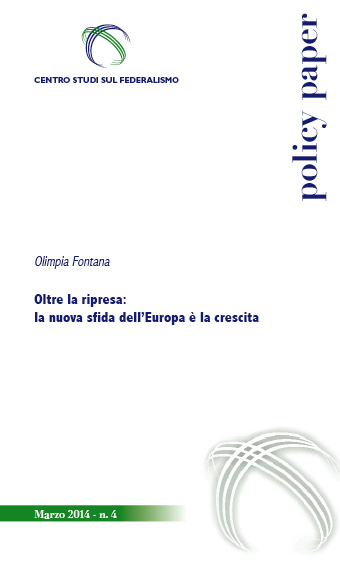Beyond the Recovery: Europe's New Challenge is Growth
Author: Olimpia Fontana
Date: Marzo 2014
In recent months, the Eurozone has shown positive signs of change: the path towards banking union has been undertaken, financial markets have once again begun to invest in peripheral countries’ government bonds, and the current account deficits of the weak peripheral countries are in the process of being reduced. Despite these achievements, Europe’s position on the international stage remains a matter of concern: according to the International Monetary Fund (IMF), Europe is estimated to grow at a rate of 1% in 2014, compared to a growth rate of 2.6% in the U.S., while the number of unemployed on the old continent has risen to 20 million, with youth unemployment peaking at 50% in Spain and Greece . Unemployment has gone from being a result of the crisis to the cause: people without jobs consume less, while businesses invest and hire less. To paraphrase the words of Pier Carlo Padoan, the former Vice-President and Chief Economist of the OECD, the problem emerging in Europe is that it is unclear to what extent there are mechanisms by which, once the effect of the various support measures has worn off, recovery will be sustainable . Essentially, even in the best-case scenario, one in which we stay abreast of economic recovery, the risk is that it would not evolve into a true path of growth. Even the IMF has now rejected the theory of expansionary austerity, and the austerity measures taken by the European Union do not explain the recent improvements in the economy . A more plausible explanation of recovery seems to lie in the monetary policy adopted by the European Central Bank (ECB) thanks to the purchase of government bonds on the secondary market. This has resulted in market recovery and stability, but in the long run monetary policy will not be enough: initiatives need to be taken aimed at growth and prioritising employment.

